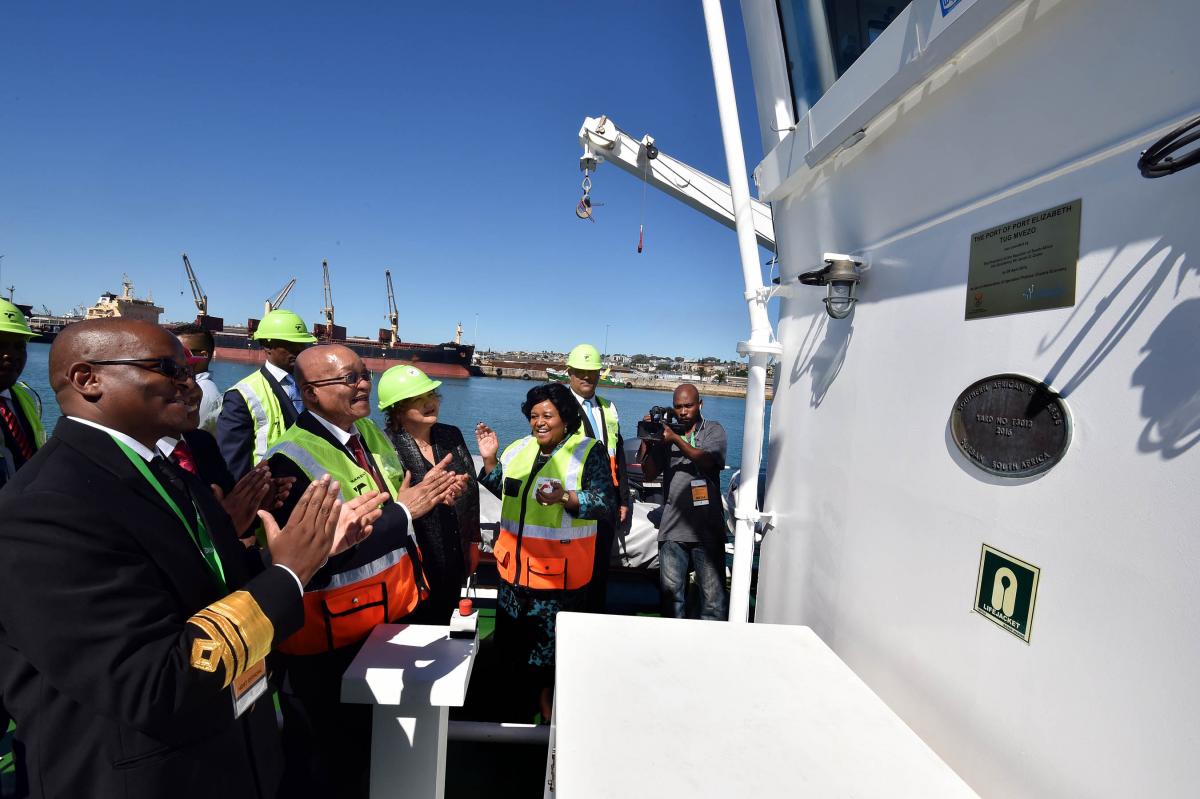More than R17 billion has been unlocked in the economy and a further 4 500 jobs have been created since the launch of Operation Phakisa: Oceans Economy less than two years ago.
President Jacob Zuma said this during a recent visit to the Port of Port Elizabeth.
The President visited the port to monitor the economic activity taking place and report back on the progress made since the launch of Operation Phakisa: Oceans Economy.
Operation Phakisa (meaning “hurry up” in Sesotho) is a government programme designed to fast track the implementation of solutions on critical development issues. Through Operation Phakisa, government aims to implement priority programmes better, faster and more effectively.
South Africa is targeting the oceans economy, as it is one of the key drivers in the Nine-Point Plan to grow and transform the economy, create jobs and attract investment.
President Zuma said government had learned good lessons in implementing Operation Phakisa: Oceans Economy and unlocking private sector investment.
“Where government has made interventions, whether within the policy space or facilitating authorisations and approvals or providing some incentives, it has unlocked private sector investment,” he said.
The President added that government would continue to work hand-in-hand with the private sector and all its partners and stakeholders to ensure that there were more investments.
Within the last year and a half, Operation Phakisa’s main focus had been on implementing plans to clear constraints and blockages hampering the development of these projects, he said.
“Operation Phakisa will also be used to develop rural economies. This we will do through small harbour development, coastal and marine tourism and aquaculture which is the fish industry,” said President Zuma.

Rehabilitating harbours
An amount of R80 million had been allocated for the rehabilitation and maintenance of proclaimed fishing harbours in Gansbaai, Saldanha Bay, Struisbaai, Gordons Bay and Lamberts Bay in the Western Cape.
The establishment of three new harbours in the Northern Cape, Eastern Cape and KwaZulu-Natal would also provide opportunities for local and rural economic development.
In the aquaculture sector, more than
R400 million worth of investments, both from the private sector and government, have been committed across 10 aquaculture farms in the Eastern Cape, KwaZulu-Natal, Western Cape and Northern Cape.
President Zuma also announced the launch of the South African International Marine Institute to be based at the Nelson Mandela Metropolitan Municipality.
The initiative aims to develop the skills and knowledge base required to ensure the success of “Blue Economy” maritime economic development for Operation Phakisa and the African Union’s African Integrated Maritime Strategy.
During the visit, the President was taken to the re-constructed slipway and lead-in jetties within the Port of Port Elizabeth. An investment of R307 million is being channelled towards the refurbishment of the port and work is underway to attract new investments.
The refurbished slipway will be able to accommodate more vessels. When the development is complete, at least 12 vessels will be accommodated for hull inspection and maintenance as compared to the current two.
President Zuma mentioned that South Africa is also making progress in the boat building sector. He said R353 million had already been committed in the ports of Durban and Cape Town for boatbuilding infrastructure, and this initiative had created approximately 355 direct jobs.
President Zuma also unveiled a plaque at the newly-acquired boat hoist of Port Elizabeth. It is the second of its kind in the country.
"This boat hoist has a 90 ton capacity and forms part of the construction of a new slipway. This will ensure that the industry is assisted more efficiently than in the past,” said the President.



 Facebook
Facebook Twitter
Twitter WhatsApp
WhatsApp